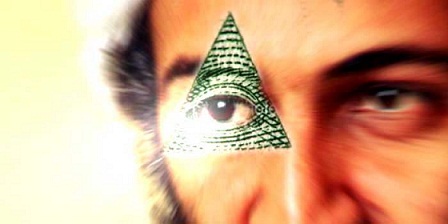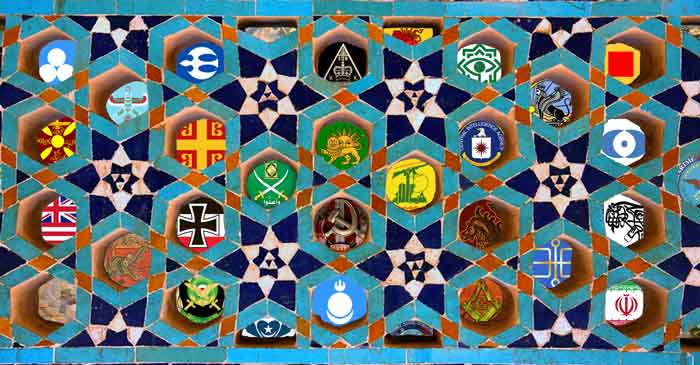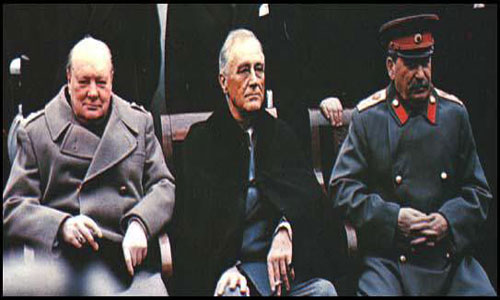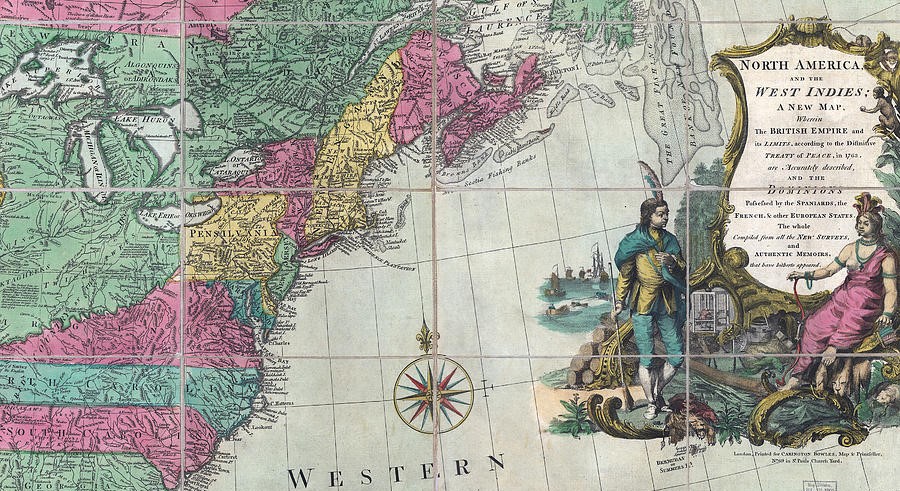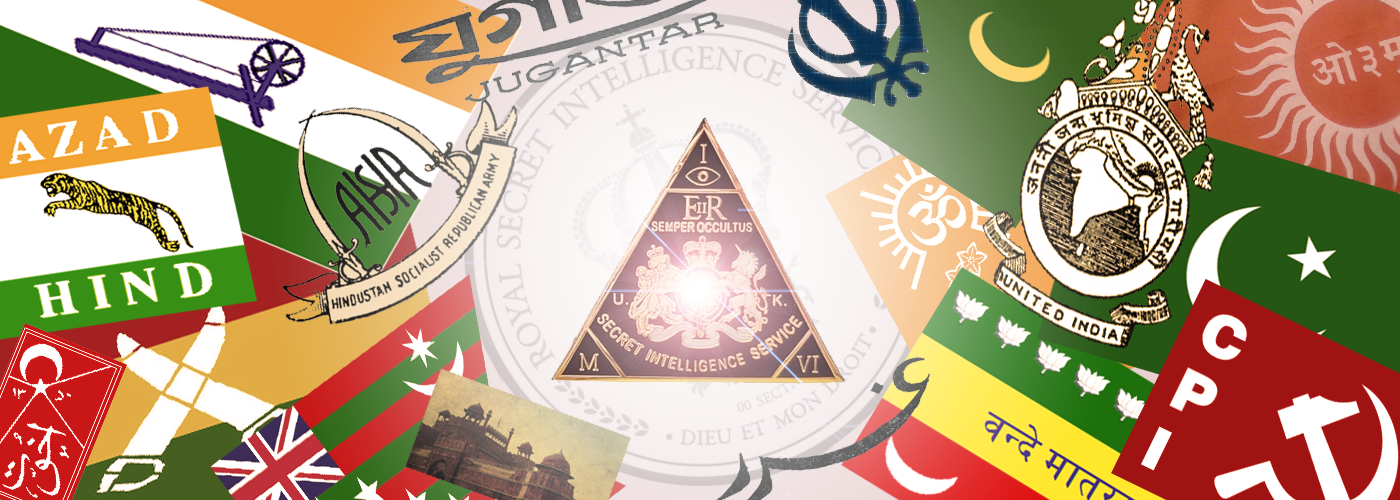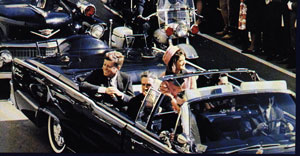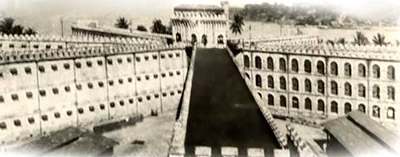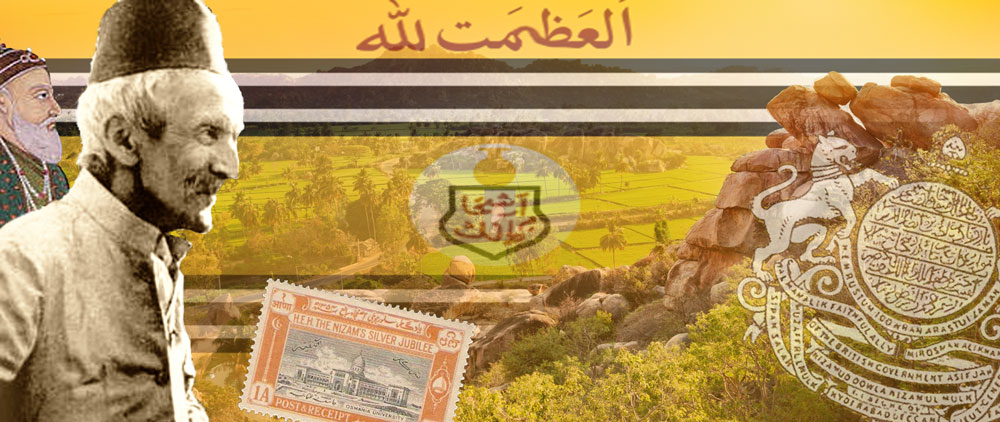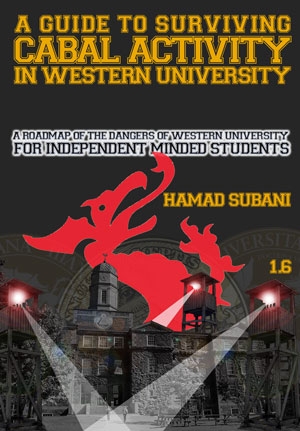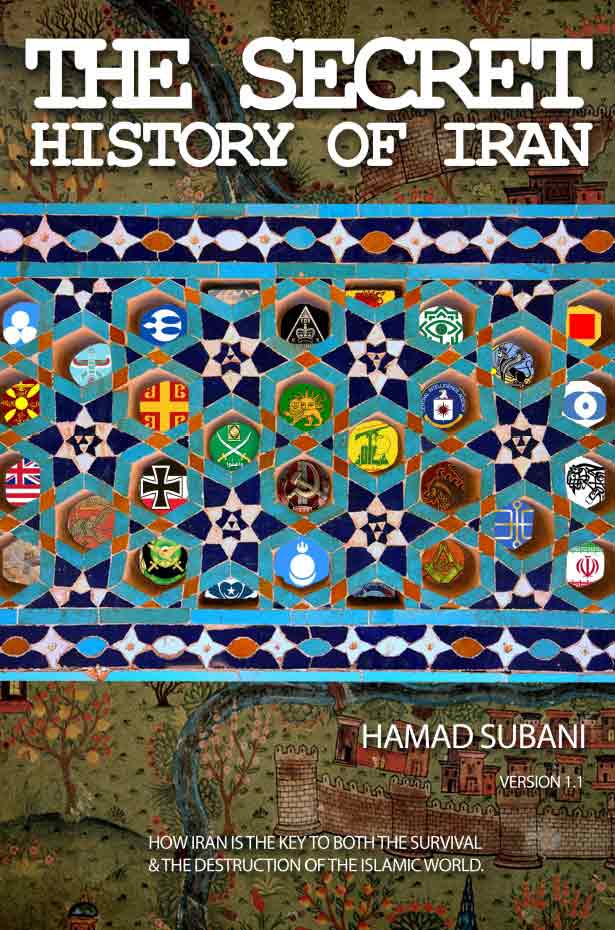Book Review-Analysis; Madina Economics
Last Updated on July 6, 2024 by Hamad Subani
These banks, the result of clever Jews’ Thinking,
–Iqbal in the 1930s.[1]Muhammad Munir Ahmed, 7th Century Madina Economics: The First Economic System of the Mankind, (Lahore: Aiwan-E-Ilm-O-Fann, 2020) p. 138.
Takes away Gods’ Light from the Hearts of Men.
Unless this System is destroyed Completely,
Knowledge, Religion and Culture are mere Empty Names.

When Imran Khan was elected Prime Minister of Pakistan in 2018, he made a victory speech in which he announced his intentions to rebuild Pakistan based on principles of the first Islamic state of Medina. In the optimism of that time was borne the phrase “Madina Economics.” Two years later, Muhammad Munir Ahmad, a Pakistani Economist, produced a book on the same (It’s called 7th Century Madina Economics – The First Economic System of the Mankind; Amazon Link, Another Link), in which he outlines key deliverables of this project, and the challenges it would face in the Pakistani context. The ousting of Prime Minister Imran Khan has cast uncertainty and gloom not just on the future of Madina Economics, but the future of Pakistan itself. But if Pakistan is to be resuscitated (Imran Khan or no Imran Khan), its Economic System will have to change. And this is where Madina Economics comes back into relevance. And Pakistan or no Pakistan, an alternative Economic System to what the world is being forced to put up with, is the need of the hour.
In this critical review-analysis, I extrapolate on this book to arrive at my own conclusions which are more in line with Historical Investigations on this website, and therefore it is necessary to point out that these extrapolations are mine, not the authors.’ For example, I lump all historical opponents of Madina Economics with Phoenicians and confusing variants of their “Phoenician Economics,” which is the model currently in vogue across the globe. This is in line with recent research into Conspiracy Theory and regular readers can relate, but none of this will ever be mainstream.

When the Prophet of Islamﷺ first gained territory in Medina (present-day Saudi Arabia), he set forth completely alien economic practices, in what was a trading outpost of rich Jewish merchants. This first Islamic state of Medina would expand beyond Arabia in the lifetime of the Prophetﷺ at a speed not seen by any other Empire/Religion/State in human history. Even after the death of the Prophetﷺ, the first Islamic state of Medina (now headquartered at Mecca) continued to be true to the Economic Model left behind by the Prophetﷺ for 29 years. This is quite a remarkable feat, considering that the mission of the Prophet before him (Jesus) ended up as a trainwreck, with even his original Scripture being lost and replaced with tampered ones.

Needless to say, the Phoenicians went to work immediately, in the very lifetime of the Prophetﷺ, to put this new phenomenon back into the box. All of Ancient Phoenicia was falling to Arab/Islamic conquest, and Mongols were later called in to counter them. The Phoenicians desperately clung on dearly to their outpost of Tyre till 1290, after which they realized the futility of operating in the Middle East, and instead made a comeback centuries later, hiding behind European colonial empires.
The biggest Phoenician accomplishment was putting an end to the Economic Model left behind by the Prophetﷺ in a mere 29 years after his death, and substituting in its place, endless conspiracies, intrigues, power struggles. I have detailed their efforts in another book. By then, Islamic monarchies had emerged, which despite of all their faults and worldly ambitions, they somewhat stayed to true to the essence of Madina Economics. This is self-evident in the immense prosperity produced by some of these monarchies, and people connected to them, such as:
- Abbasid Baghdad (Put to an end by the Phoenicians using Mongol hordes).
- The wealth and influence of early Arab-Muslim sea-traders, who also introduced Islam to the Far East. Gradually, Indonesia, Malaysia and parts of Philippines[2]The name of the current capital of the Philippines, Manila, is based on an Arab-Muslim phrase. The Spanish would later start Christianizing the Philippines in an attempt to curtail the spread of Islam. Later we find the US Army stepping into their boots and engaging in genocide against Muslim natives of the Philippines. and coastal India would become Muslim without conquest. The Phoenicians now holed up in Europe, watched these developments helplessly as they could no longer access the Indian Ocean from land routes, which had been blocked by Islamic powers. So they built huge navies and sailed around Africa in an attempt to curtail Muslim influence in the Indian Ocean region.[3]When the first European (actually, a crypto-Phoenician) Vasco De Gama managed to sail to India across Africa, his mission was to convince a coastal Hindu king to stop all dealings with Muslim traders. When the King refused to listen to him, he attacked and looted his territory and sailed away!
- Moorish Spain (Put to an end by the Phoenicians by driving out all Muslims from Spain and forcibly converting the remainder to Christianity).
- Mughal India: The secret to Mughal prosperity in North India was their promotion of sharecropping, a practice in which poor farmers could cultivate on State lands in exchange for a fixed percentage of the harvest (if there was a good one). Many peasants fleeing oppression thus found sanctuary in such State lands and unleashed their productive potential. Opponents of the Mughals such as the conspiratorial Sayyid Brothers on the other hand, auctioned off such lands to the highest bidders (Revenue farmers). The revenue farmers would subject the lands to such abuse that they would become non-cultivable the next year. The Mughals also took the safety of their highways very seriously, and anyone undermining it would be subject to their immediate wrath. This brought them in open conflict with the Jats and the Sikhs, and later the Marathas.[4]After the second time the Marathas looted the booming port of Surat, the Mughals retaliated by marching deep into the South, conquering Maratha mountaintop forts, crisscrossing tropical jungles where no foreigner had ever set foot. The Phoenicians quickly figured out that these very groups could be used against the Mughals to bring India under British control. Mughal India was put to an end by the Phoenicians in 1857 through an elaborate hoax-rebellion conducted by British Intelligence.
- The economic prosperity of present-day Gulf countries, which owes itself mainly to the absence of predatory taxation. The Phoenicians are building up Iran for a future conflict with them.
Communism is NOT an Economic System
In modern times, the Phoenicians began openly formulating and pushing their very own, regressive, economic systems under the guise of Socialism and Communism.[5]There is not much difference between Socialism and Communism. Socialism can be considered soft Communism for people who aren’t ready for Communism. Socialism features punishing taxes on the middle class, so that they can co-exist but never prosper, while Communism completely eliminates the Middle Class. Munir Ahmad discusses the merits and demerits of these systems, while giving them due recognition as Economic Systems. In my opinion, it is more proper to dismiss both of these systems as Phoenician hoaxes, rather than actual Economic Systems. Here are my arguments:
- The Phoenicians are naturally jealous and hateful of non-Phoenicians acquiring assets, land, minerals, mobility, resources and means of production, even in limited quantities. They hate the idea of a strong Middle Class, and would rather have just two groups: The Rulers and the Serfs (as in Feudal Europe).
- They thus create a system in which an agency, known as The State, completely
monopolizessteals all assets, land, minerals, mobility, resources and means of production. Religion is banned so that people do not organize resistance under the banner of religion. The State justifies this stealing as “redistribution.” But what most people don’t know is that the “Redistributors” are not some random bureaucrats, but crypto-Phoenicians, who thus become more powerful than kings. - The Phoenicians have complete, covert control of The State. Through control of media and literature, they however, erase themselves from the equation. People point fingers at a mysterious, omnipresent and powerful State, but never at them. People are tricked into seeing The System as the problem, rather than a specific group of people behind it, who are more or less invisible. People are even gaslighted into thinking that they (collectively) are the ones who chose The System!
- The State has literally no competitors, as no person or group can ever muster the resources to become an economically independent entity. In fact, even to get by on even a daily basis, each and every person must be in the good books of The State. This is becoming more and more ominous with the advent of technologies, such as those being deployed in Communist China.
- By assuming powerful positions in The State, and controlling and micromanaging the lives of the citizenry, the Phoenicians become more powerful than Capitalist billionaires, despite the fact that their power and control is informal, and is exercised in the name of The State, rather than in their own name. Remember that controlling The State is more important than formally owning it.
- It is true that unlike a Capitalist system, the Phoenicians no longer get to lend money and profit from usury. This is because the citizenry is now too broke to get by, forget about paying back loans. Remember that dollars are not the only measure of “profit.” Phoenicians measure “profit” in terms of how much they prevent fellow-human beings from profiting. And in a Communist System, they live secret lives as hidden overlords, each controlling more than a 1000 serfs. In this system, people are too confused to point fingers at the Phoenicians, who are hidden from sight.
- It is true that unlike a Capitalist system, the Phoenicians also have to pool in their industries, and sometimes have to sacrifice their royal/political positions, but they are always compensated, either by getting a share of power in the new Communist State, or being granted land and resources in another country. If a Communist State fails to materialize, their industries are reverted back to them!
- In an earlier book, I detailed how no Romanov was executed in Communist Russia. In a 2023 update to an earlier paper, Miles Mathis claimed that Lenin was closely related to the Romanovs! This means that the Romanovs were compensated by being granted a “political share” of Communist Russia. In another 2021 paper, Miles Mathis discovered that many Romanovs were secretly rehabilitated in Hamilton, Canada.
- After the assassination of Mahatma Gandhi, there was a big push to make India Communist, and many industries got nationalized, including some owned by Phoenicians. The Government of India acquired a major stake in Air India, owned by the notorious Tata Group (But for some reason, the Tatas always remained in the picture and continued managing it). Soon after, this push for Communism thankfully lost momentum in India. The now public sector Air India was so badly managed (perhaps deliberately) that it became the joke of the aviation industry. Soon talks were held on privatizing it. And in 2022, it ended up back with the Tata Group! Moral of the story: Those big enough never lose their assets.
- It is true that outwardly, the Communist State may appear broke and dysfunctional (the former Soviet Union, Cuba, North Korea). But the Phoenicians running it are definitely not, and their luxurious private lives are always hidden from sight. They just don’t care about the serfs, and in the case of present-day Cuba, they have locked the citizenry in a 1950s time capsule!
The fundamental appeal of Communism is for the poor, but worldly and materialistic people, who believe they have an undue share in other people’s wealth and efforts. While the Quran is full of warnings and guidelines for the wealthy, we also find this curious verse, in which inequalities of wealth are to be considered systemic with nature (and therefore there should be no heavy-handed approach to ironing them out.). To quote,
If God were to expand sustenance for His servants, they would act outrageously on earth; but He sends down anything He wishes in [due] measure.
The Quran 42:27. Trans. T.B. Irving.
Yes, poor people can be evil too. You sometimes come across penniless and pauper nations, with a surprisingly racist and bigoted citizenry, and you wonder how regressive and tyrannical they could become if they actually had any notable wealth.
When Communism started being pushed on a global scale, Phoenicians started claiming that all other economic systems since the day Adam walked on earth (including Madina Economics) were all variants of another, deliberate, anachronistic model of Economics, which they dismissed as “Capitalism.” Whereas in reality, what they were dismissing as “Capitalism” was natural, organic, human economic development, similar to farming and language.
Communist ideologues were talking to a Western audience, and they were thus referring to the Economic Systems prevalent in the West back then, which they had thoroughly infiltrated and hijacked ages ago. They were keen to accurately highlight all the evils of “Capitalism” because they were its main operators (They operated all the big Companies, the big Banks and big Religion in the West).
The reason they came up with Communism was that a new, powerful, Middle Class was inevitably emerging following the Industrial Revolution. And they had to divert this group from growing in a “Capitalist” system, by reinventing the entire system, such that the Phoenicians were back in control. The two World Wars were staged for the creation and expansion of the Communist Soviet Union. But the end results were mixed, with only Russia, East Europe and China emerging as Communist. The rest of the world had to be given doses of soft Communism (aka Socialism) in increments.
Madina Economics IS a Variant of”Capitalism.”
It is true that Madina Economics is indeed a variant of what has now been derisively labelled as “Capitalism,” but what was is in reality, the earliest, organic, Economic System practiced by mankind. Madina Economics can be considered a refinement and a restoration of the same. In fact, Muneer Ahmed has pointed out recent research by Benedict Kohler[6]Koehler B., Early Islam and the Birth of Capitalism (Lexington Books, 2014). who says that the Economic Model of Madina was the first Market-based Economic System of mankind![7]Muhammad Munir Ahmed, 7th Century Madina Economics: The First Economic System of the Mankind, (Lahore: Aiwan-E-Ilm-O-Fann, 2020) p. 44. Kohler even refers to the Prophetﷺ as “the first Free-Market Economist” of mankind!
Before we delve further into Munir Ahmed’s Madina Economics, it is necessary to get a birds-eye view of different variants of Capitalism, so that we don’t end up confusing them with each other. Here is my very own list, in a rough chronological order. Note that more than one system may be practiced in parallel in a nation, at any given time:
- Phoenician-Babylonian Usury Capitalism: This is enshrined in the world’s oldest known legal code, that of Hammurabi. It details rules for charging commissions and interests. In other words, Phoenicians were at this skullduggery since ancient times. Which is why they had to oppose and murder Prophets who tried to free people from these systems.
- Phoenician Trader-Raider Capitalism: Contrary to what we have been taught in school, the Phoenicians had developed navigation technologies ages ago, and even colonized the Americas before Columbus! The secret of their success was a combination of trading and raiding.[8]Munir Ahmed points out that in Greek civilization (which can be considered an offshoot of Phoenician civilization), dacoits, traders and athletes had a common god, Hermes! p. 24 When the nation they were exploring was strong, they infiltrated it as traders, made huge profits, and even married into its royalty if possible. If the nation they were exploring was weak, they immediately switched over to genocide and raiding (They also mercilessly attacked non-Phoenician ships, and were pioneers of piracy). Since the Phoenicians later hid behind Christian-European colonial empires, we see a repeat of this exact phenomenon, most prominently in the case of the British Empire.
- Phoenician “Official Counterfeiting’ Capitalism: Ever since humans began using gold as a medium of exchange, Phoenicians were quick to learn that if they controlled a State Treasury, they could steal/shave/clip a small portion of gold from the gold coins entering the State Treasury. There are records of this happening in the pre-Christian Roman Empire. The clipped coins would still officially have the same value, but as people became cognizant that they contained less gold, prices would rise, creating inflation. But by then, the Phoenicians had smelted off the shavings into new coins, which they quietly pocketed for themselves. As time progressed, the scam became more refined. Coins entering a State Treasury were melted, and the percentage of gold would be secretly reduced, as opposed to visible clipping. With paper money, things became wild.
- Hindu Bania Capitalism: India has a class of merchants, traders and moneylenders that go back ages. They are OK with Usury, but traditionally practice it on a much smaller scale than the Phoenicians. They usually take gold as collateral for loans, and also double as goldsmiths and jewelers. They are historically based in Gujarat but generations of them have been migrating to far corners of the world, from Africa and California to even Muslim countries. This migration away from Gujarat only raises doubts about their so-called Gujarat model, as it is clear that they don’t do well there (Neither do other Indians, and even poor ones avoid migrating to Gujarat). When Idi Amin forced white farmers out of Uganda, he also forced the entire Indian Gujarati community to leave alongside them, claiming that “They milk the cow but don’t feed it.” It seems the African locals saw them as collaborators of wealthy white farmers. In recent times, these Capitalists have drawn attention as hatemongers, even while comfortably operating in Muslim countries/cities! There is also a hyper-worldly Muslim branch of this group, but sadly Ismailism has taken root among them. While they are generally detested, they are the reason India will be non-Communist.[9]Note that many crypto-Phoenician groups in India and abroad also operate as Banias/Marwadis/Mahajans/Ismailis to avoid drawing suspicion. For example, the Gujarati-Ismaili community in Canada is notorious for producing politicians who get promoted at warp speed, and further Phoenician agenda. Take the case of Arif Virani, the so-called Minister of Justice and Attorney General of Canada. He is openly trying to end free speech in Canada. (Another Pinki Virani happens to be an advocate of euthanasia in India. Interestingly, Virani also happens to be a Spookopolis in Iran.) Or take the case of the Freemason Mayor of Calgary, Naheed Nenshi
- Western-Christian Capitalism: Unbelievably, there was a time in Christian Europe where usury was outlawed, and everything was remarkably stable. Remember that Western banks as we know them came into existence after the 12th and the 13th Century.[10]Muhammad Munir Ahmed, 7th Century Madina Economics: The First Economic System of the Mankind, (Lahore: Aiwan-E-Ilm-O-Fann, 2020) p. 79.
- Pre-Islamic Arab Capitalism: Both Arabs and Phoenicians are Semitic people, and trading is in their blood. Pre-Islamic Arabs were also heavily into trade, but were not as evil as their Phoenician counterparts. Especially in the case of the Arabs of the Arabian Peninsula. Due to lack of cultivable crops, they thrived through trade, with caravans stretching from Medina to Syria and Iran. Few people know that the Prophetﷺ prior to receiving Prophethood, started out as a trader, participating in long-distance trading caravans. Heﷺ even had a leather warehouse in Mecca.[11]Muhammad Munir Ahmed, 7th Century Madina Economics: The First Economic System of the Mankind, (Lahore: Aiwan-E-Ilm-O-Fann, 2020) p. 39
- Madina Economics: What this Review is all about.
- Post-Madina Economics: While the Golden Age of Madina Economics would be short-lived, various later Muslim political groups found economic success in implementing limited facets of this Economic Model, perhaps subconsciously. This can be categorized into the following historical eras:
- Abbasid Baghdad
- Early Arab-Muslim Traders in the Indian Ocean
- Moorish Spain
- Mughal India
- Present-day Gulf Countries.
- Phoenician Banksters masquerading as Muslim Traders: Following the emergence of British Colonialism in Asia and Africa, many crypto-Jewish and crypto-Phoenician groups inhabiting the Middle East were invited into British colonies, after local resentment against them reached a boiling point. Among them, these two groups were most prominent:
- The Agha Khan III and his followers, who fled Iran after the Qajar rulers became their enemies. The British would supplant them in prosperous port cities of British India, where they continued their cultish aberration of Islam which goes by several names (Ismali/Nizari-Ismaili/Bohra/Khoja). Pretty soon, the British started grooming them for political leadership over the Muslims of the Subcontinent. Many early founders and industrialists of Pakistan figure among them. Note that the Agha Khan is sometimes titled as Karimi, which refers to an international trade network spanning the Indian Ocean and the Persian Gulf. It is likely that this trade network consisted of crypto-Phoenicians masquerading as Muslims.
- Jews from Baghdad were supplanted across British India, to take over the lucrative trade activities of Muslim nobles whom the British had ruint. Some of them were even supplanted as landlords in British Bengal.
- Western (read: Phoenician) Usury Capitalism: To nullify Christian prohibitions against Usury, crypto-Phoenicians devised several novel techniques:
- When the Crusades were started with the unsuccessful objective of using Christians to reclaim long-lost Phoenician territories in the Levant, the Knight Templars pioneered a system of banking. They would take money from pilgrims and pay them in the Holy Land. This led a mitigation of religious sentiments against usury.[12]Muhammad Munir Ahmed, 7th Century Madina Economics: The First Economic System of the Mankind, (Lahore: Aiwan-E-Ilm-O-Fann, 2020) p. 149.
- They invented a rival branch of Christianity, Protestantism, which did away with prohibitions on usury.
- They invented the concept of Purgatory,[13]Muhammad Munir Ahmed, 7th Century Madina Economics: The First Economic System of the Mankind, (Lahore: Aiwan-E-Ilm-O-Fann, 2020) p. 147 in which a Christian usurer could escape Hell by spending some time in Purgatory.
- In the 17th Century, Francis Bacon started proposing usury as a Productive Activity.
- Similarly in the 17th Century, Claudius Salmasius would start proposing usury as a Productive Practice in Holland. Holland would emerge as the earliest centers of usury in the Western-Christian world.
- In the 18th Century, Robert Turgot would claim that time belonged to individuals, not God, and therefore usurers had every right to profit from the “Time-Value of money,” because money available now had more value compared to money available in the future.[14]Muhammad Munir Ahmed, 7th Century Madina Economics: The First Economic System of the Mankind, (Lahore: Aiwan-E-Ilm-O-Fann, 2020) p. 148. This piece of conjecture, despite being entirely hypothetical and circumstantial, is now sold as a science in University-level Finance textbooks worldwide.
- Similarly 18th Century, Jeremy Bentham would defend usurers from restrictions on their interest rates, in the interest of protecting the “free-market economy.”
- We then have Adam Smith preach that the market is best left to itself, so that the market would no longer be subject to scrutiny by Church authorities. Adam Smith also viewed usury favorably, [15]Muhammad Munir Ahmed, 7th Century Madina Economics: The First Economic System of the Mankind, (Lahore: Aiwan-E-Ilm-O-Fann, 2020) p. 85 so you know who he represents. But even then, no bank had the right to call on the Government for bailouts.[16]Muhammad Munir Ahmed, 7th Century Madina Economics: The First Economic System of the Mankind, (Lahore: Aiwan-E-Ilm-O-Fann, 2020) p. 83.
- Phoenician State Capitalism (read: Communism): In which an omniscient entity known as The State starts acting like a Monopoly Capitalist over all means of production, livelihood and wealth. The Phoenicians love this because they get to control and steal as much as their hearts desire, while pretending to redistribute wealth.
- Western (read: Phoenician) “Banksters Gone Wild” Capitalism: The current state of the Western world, where tax monies are being used to bail out private banks, and where Central Banks are printing fiat currency and lending it at interest to the Government. Munir Ahmed notes that up to the 17th Century, Central Banks were restricted to only three countries, England, Holland and Sweden.[17]Muhammad Munir Ahmed, 7th Century Madina Economics: The First Economic System of the Mankind, (Lahore: Aiwan-E-Ilm-O-Fann, 2020) p. 84.
This list serves to show that while Madina Economics is indeed a form of Capitalism, it is miles apart from other, more noxious mutants of Capitalism. This list also shows that Phoenicians have always historically dominated Capitalism, and have made every effort to prevent other groups from partaking in it, with Communism being the most blatant attempts so far.
It is also worth mentioning that Western Economists, whether they be Communist or Capitalist, always avoid entertaining the idea of Madina Economics as a viable system. To quote,
[……]Joseph Schumpeter wrote in 1954 about the “Great Gap” in his famous work, “The History of Economic Analysis,” where he mentioned that there was a great gap of 500 years in the history of economic thought, from Greeks to Thomas Aquinas. [18]Muhammad Munir Ahmed, 7th Century Madina Economics: The First Economic System of the Mankind, (Lahore: Aiwan-E-Ilm-O-Fann, 2020) p. 43.
Cleverly, these 500 years range from the 7th Century to the 11th Century AD, encompassing Madina Economics and its achievements.
Some Little-Known Economic Scandals of Our Times
Munir Ahmed has dug up some interesting episodes of present-day Western Capitalism and Usury, which are generally swept under the rug. All of these episodes can be attributed to Phoenician thievery.
- In 1711, a Company named the South Sea Company was established in England. The Anglo-Spanish war was expected to conclude in 1713 as per an Agreement, and the Company stood to benefit from trade to Spanish colonies. It had been granted a Monopoly to this trade in advance, in return for assuming a portion of the National Debt of the newly established Central Bank, the Bank of England (est. 1694). The company was given a Royal Charter to further legitimize it, and its directors even offered to assume all of the National Debt of England. Its stock rose from 175 pounds, peaked at over 1000 pounds, and later crashed to 150 pounds when it was learnt that actual prospects of trade in Spanish colonies was rather bleak.
- The Glass-Steagall Act of 1933 separated the more risky Investment Banks from having their risk spill over onto Commercial Banks.[19]Muhammad Munir Ahmed, 7th Century Madina Economics: The First Economic System of the Mankind, (Lahore: Aiwan-E-Ilm-O-Fann, 2020) p. 88. But in 1999, the Glass-Steagall Act was repealed, making the banking sector devolve into a speculative spree. It seems that the Dodd Frank Wall Street Reform Act of 2010 tried to reiterate some points of the Glass-Steagall Act, but with much less impact. Similarly, the Sarbane-Oxly Act was put in place in 2002 for a period of five years to check the huge financial malpractices of those times. None of these countermeasures have managed to curtail the ever-increasing boom-bust cycles of the American economy.
- The University of Chicago once proposed 100% Reserve Banking, as opposed to the current Fractional Reserve Banking, but the idea was killed.[20]Muhammad Munir Ahmed, 7th Century Madina Economics: The First Economic System of the Mankind, (Lahore: Aiwan-E-Ilm-O-Fann, 2020) p. 88.
- In the 1930s, around 275,000 Americans lost their homes to foreclosure, triggered by a Mortgage Crisis. The Federal National Mortgage Association (known as Fannie Mae) was later established to ensure a reliable supply of mortgages and to keep things in check.
- In 1998, the US Federal Reserve quietly bailed out a private hedge fund known as Long Term Capital Management, to the tune of $4 billion dollars.[21]Muhammad Munir Ahmed, 7th Century Madina Economics: The First Economic System of the Mankind, (Lahore: Aiwan-E-Ilm-O-Fann, 2020) p. 90.
- In 2007, Fortune magazine declared Lehman Brothers, the fourth largest Investment Bank in USA, “the most admired securities firm.” In late 2008, Lehman Brothers declared bankruptcy, bringing an erosion of US$10 trillion in Market Capitalization. [22]Muhammad Munir Ahmed, 7th Century Madina Economics: The First Economic System of the Mankind, (Lahore: Aiwan-E-Ilm-O-Fann, 2020) p. 126-127. Surprisingly, the Federal Reserve did not come to its rescue. The Federal Reserve did however come to the rescue of Bear Stearns, a competitor of Lehman Brothers, which was also dealing with the Sub-Prime Mortgage market (It was purchased by J. P. Morgan).
- In 2007, the Royal Bank of Scotland purchased ABN AMRO, a Rothschild affiliated bank for an astounding $106 billion. Instead of going bankrupt, the Government came to the rescue of RBS, taking over 58% stake in the bank.[23]Muhammad Munir Ahmed, 7th Century Madina Economics: The First Economic System of the Mankind, (Lahore: Aiwan-E-Ilm-O-Fann, 2020) p. 130. There may be more to this scandal, as in a 2020 paper, Miles Mathis has linked the pseudo-German Rothschilds to Scottish Banks.
- In 2007, the Insurance Company American International General (AIG), a $1 trillion institution, went bankrupt. The bankruptcy was blamed on its London office, which was involved in insuring of toxic financial products of other banks.[24]Muhammad Munir Ahmed, 7th Century Madina Economics: The First Economic System of the Mankind, (Lahore: Aiwan-E-Ilm-O-Fann, 2020) p. 131. The Federal Reserve Bank stepped in to save it with an $85 billion loan!
Usury in the Western Context
The usurers sell nothing to the borrower that belongs to him. They only sell time, which belongs to God. Therefore it is not fair to make profit by selling someone else’s property.
12th Century English theologian Thomas of Chobham.[25]Muhammad Munir Ahmed, 7th Century Madina Economics: The First Economic System of the Mankind, (Lahore: Aiwan-E-Ilm-O-Fann, 2020) p. 145.
Every man stops working on holidays, but the oxen of usury work unceasingly and thus offends Gods and Saints; and since usury is an endless sin, it should in like manner be endlessly punished.
– A 13th Century Manuscript which illustrates how usurers increase their wealth using gimmicky mathematical formulae. [26]Muhammad Munir Ahmed, 7th Century Madina Economics: The First Economic System of the Mankind, (Lahore: Aiwan-E-Ilm-O-Fann, 2020) p. 145.
In simple words, banking is business done with other people’s money, and in case of crisis, saved again with other people’s money.
Munir Ahmad in Madina Economics.[27]Muhammad Munir Ahmed, 7th Century Madina Economics: The First Economic System of the Mankind, (Lahore: Aiwan-E-Ilm-O-Fann, 2020) p. 102.
To quote Munir Ahmad,
It is generally believed that the principal business of banks lie in lending to firms and individuals involved in the production of goods and services. However in most western economies, it is less than 10 per cent of the total. In Britain, with a particularly active financial sector, it is less than 3 per cent.[28]Muhammad Munir Ahmed, 7th Century Madina Economics: The First Economic System of the Mankind, (Lahore: Aiwan-E-Ilm-O-Fann, 2020) p. 101.
Munir Ahmed points out the research of Thomas Pickety, which proved with the help of statistical data spanning 250 years, that the returns of interest far exceed those of the returns of other factors of production (land, labor, entrepreneurship etc.), making usurers disproportionately rich. [29]Muhammad Munir Ahmed, 7th Century Madina Economics: The First Economic System of the Mankind, (Lahore: Aiwan-E-Ilm-O-Fann, 2020) p. 153. Pickety’s famous equation was “r>g,” where r represents Capital Accumulation and g represents Economic Growth. It can thus be understood why the Phoenicians made such tremendous efforts in legalizing usury in the Christian world. Now, the “Financial Sector” of the West has ate up all other sectors of Western Economy (the Real Sector), such that everything is now tied to the “Financial Sector.”
Munir Ahmed sees the following three financial, Usury-based products[30]Western intellectuals who are OK with usury but who agree that banks should not be dealing with these toxic financial products are known as proponents of “Narrow Banking.” as highly speculative and toxic (Hint: They must never be in your investment portfolio):
- Mortgage-Backed Securities (MBS)/Asset-Backed Securities (ABS)
- Credit Debt Obligations (CDO)
- Collateralized Mortgage Obligation (CMO): An MBS and a CDO taken together.
- Credit Default Swaps (CDS). Munir Ahmed claims that this was a hedging instrument first introduced in 1995 by JP Morgan, but grew bigger than both the Stock Market and the Bond Market itself (In 2007, it was valued at $62 trillion). It was meant manage risk of default of MBS’, CDOs and CMOs. [31]Muhammad Munir Ahmed, 7th Century Madina Economics: The First Economic System of the Mankind, (Lahore: Aiwan-E-Ilm-O-Fann, 2020) p. 120.These toxic financial products have spawned an entire industry of “Risk Management products,” which in reality, simply shift the risk to other players, such as Insurance companies.
Salient Features of Madina Economics, based on the Actions, Sayings and Directives of the Prophet.ﷺ
Now that you are ready for it, this list has been curated from what I found in Munir Ahmad’s book, with a few additions of mine.
- Speculative activities are prohibited. Contracts regarding crops are to be made when the fruit is ripening, not before.[32]Muhammad Munir Ahmed, 7th Century Madina Economics: The First Economic System of the Mankind, (Lahore: Aiwan-E-Ilm-O-Fann, 2020) p. 42 A good cannot be resold until the trader has taken physical possession of it and changed its location.[33]Muhammad Munir Ahmed, 7th Century Madina Economics: The First Economic System of the Mankind, (Lahore: Aiwan-E-Ilm-O-Fann, 2020) p. 54
- The scope of economic activity is limited by prohibiting business related to Finance (Debt/Usury), Alcohol and/or intoxicants, Gambling, Pornography etc but there are absolutely no restrictions on the workings of individuals and markets.[34]Muhammad Munir Ahmed, 7th Century Madina Economics: The First Economic System of the Mankind, (Lahore: Aiwan-E-Ilm-O-Fann, 2020) p. 46
- The modern-day stock market can be considered an extension of gambling or betting. In addition, most companies listed on it are heavily involved with interest-based capital.
- Influencing the market with Monopolies and Misinformation is prohibited.[35]Muhammad Munir Ahmed, 7th Century Madina Economics: The First Economic System of the Mankind, (Lahore: Aiwan-E-Ilm-O-Fann, 2020) p. 50
- Earning of Profit is tied exclusively to producing Goods and Services. Money cannot be used to pull money, as in the case of usury, or the entire “Financial Sector” of modern times. Money is to be used for productive activities, and a gain cannot be made out of money itself. Or, money is to be treated strictly as a medium of exchange and not a commodity.[36]Muhammad Munir Ahmed, 7th Century Madina Economics: The First Economic System of the Mankind, (Lahore: Aiwan-E-Ilm-O-Fann, 2020) p. 142. Interestingly, Munir Ahmed points out to research by Thomas Pickety (2013) which proves that return of capital as interest is greater than the return of other factors of production,[37]Muhammad Munir Ahmed, 7th Century Madina Economics: The First Economic System of the Mankind, (Lahore: Aiwan-E-Ilm-O-Fann, 2020) p. 53 making banking the most lucrative of industries. This explains how in the West, Bank and Insurance buildings have quickly replaced Churches as the tallest and most glittering constructions in the last century.
- Securitization, or the practice of issuing collateral for financial activity based on receivables from previous loan or any future asset is prohibited. It is to be noted that in pre-Islamic Arabia, this practice did exist, and the asset in question would be the unborn fetus of a female camel.[38]Muhammad Munir Ahmed, 7th Century Madina Economics: The First Economic System of the Mankind, (Lahore: Aiwan-E-Ilm-O-Fann, 2020) p. 118. Derivatives, which are similar, artificial, financial products are also prohibited. With these toxic financial products out of the marketplace, there is no longer any necessity for “Risk Management products” such as Insurance either.
- Money can be however lent, on the basis of profit sharing and/or equity, with the caveat that losses will also be shared if incurred. There are several Islamic concepts pertaining to this, the most notable being Mudarabah.
- Market prices cannot be fixed by authorities, even in the name of Greater Good.
- A seller may conceal his markup from the buyer (Musawamah) or both the buyer and seller may agree on a markup (Murabahah). The latter is encouraged in the interests of transparency.
- There can be no State-mandated taxes on the trade, sale and purchase of goods in the market.[39]Muhammad Munir Ahmed, 7th Century Madina Economics: The First Economic System of the Mankind, (Lahore: Aiwan-E-Ilm-O-Fann, 2020) p. 176 In fact this was the fundamental difference between the market established by the Prophet ﷺ in Medina, whereas the preexisting Jewish market in Medina collected all sorts of taxes.[40]Muhammad Munir Ahmed, 7th Century Madina Economics: The First Economic System of the Mankind, (Lahore: Aiwan-E-Ilm-O-Fann, 2020) p. 194 In modern times, V.A.T, G.S.T,[41]In 2014, Globalists managed to sway India’s domestic Economic Policies and introduced the G.S.T. in India. However most Indians cannot afford to pay it, and as a result, most shop-owners agree to avoid charging G.S.T in exchange for not providing a bill of sale. G.S.T. and restrictions on cash have been blamed for destroying India’s biggest economic strength, its Informal Economy. And this was by design. H.S.T etc would all be prohibited. Among Western countries, only the USA has managed to skip these so far (as far as domestic goods are concerned). The reasoning behind this is that:
- People involved in productive activity cannot be converted into unsalaried tax collectors for the State.
- State taxes on the trade, sale and purchase of goods are at the expense of returns due to people engaged in productive activity, thereby discouraging productive activity.
- Income Taxes destroy the Middle Class, because unlike the ultra-rich, they do not have access to Financial Literacy (that’s not what they teach at school), Top-notch tax Accountants, Offshore Tax Havens, Swiss Bank Accounts, Tax Residency in Caribbean Countries etc.
- Unnecessary Taxes accumulating in the coffers of the faraway Capital city of the State may not necessarily be used for the benefit of those who paid them. Rather, they may become instruments of tyranny in the hands of unscrupulous Governors and bureaucrats.
- Islamic Philosopher Ibn Khaldun theorized that the higher a tax rate is set, the less a tax revenue gets collected.[42]Muhammad Munir Ahmed, 7th Century Madina Economics: The First Economic System of the Mankind, (Lahore: Aiwan-E-Ilm-O-Fann, 2020) p. 194
- There can be no “Income Tax” as it is accepted that not all people are of equal ability, or of equal productivity.
- There is however, a 2.5%, State-mandated and State-collected tax (Zakat)on total yearly income and liquid assets such as gold, as well as on the production and manufacturing of goods, and agricultural produce. This is to be used exclusively for the upliftment of the poor. Where there is no State mandate for this, Muslims are expected to voluntarily comply, even when they are paying hideous taxes to a non-Muslim Government.
Modern Currency as a Toxic, Usury-based Financial Product
One aspect Munir Ahmed seems to have not fully explored is the Islamic prohibition on the State from inflating currency. In the Prophet’sﷺ first State of Madina, the only medium of currency was gold and silver, or more precisely, gold and silver coins which were originally minted by the Byzantine Empire (Dirhams and Dinars).[43]No relation to the currencies currently used by some Arab countries. This was because the Arabian Peninsula had no mint of its own back then. These were more or less stable in terms of the quantity of gold or silver in them.
Since gold and silver exist in finite quantities,[44]The same can be said of Bitcoin, which gets more finite, the more it is mined. a State cannot mass-produce them on whim. The State can however adulterate their content, causing inflation, and this had been going on since ancient times.
The first Islamic gold coins were later minted by the Umayyad King Marwan, and they were highly prized for their low metallic content. Even the Phoenicians prized them and they have been found in the graves of Vikings, who were actually crypto-Phoenician raiders.


The Prophetﷺ would have never agreed to the minting of coins with adulterated content (if there was a mint in operation in Madina), as doing so would make such coins “speculative and toxic financial products,” such as those associated with modern usury-banking. Neither would he have allowed the State to issue fiat currency; Paper “Notes” and “Legal Tender” which cannot be exchanged for gold or silver. And he would have never agreed to a Usury-based Central Bank printing fiat currency and then lending it to the Government at interest. In fact, the only way to Islamically legalize modern paper currency in an Islamic State is to:
- Make paper currency unconditionally exchangeable at State Banks for a fixed amount of gold or silver.
- Use modern technology to embed actual gold and silver threads into the paper currency, which can be extracted upon burning/melting.
- Criminalize the use of fiat currency issued by other nations (I am looking at you, post-1913 USA and Chinese, auto-expiring CBDCs).
The Deliverables of Madina Economics
Munir Ahmed condenses the “Deliverables” of Madina Economics into the following postulates:
- Ease of Doing Business (EODB)
- Ensuring Consumer Sovereignty
- Promotion of Entrepreneurship
- Financial Intermediation Under Equity (As Opposed to Usury)
- Managing the Surplus (In a Just Manner)
These postulates would appeal to all reasonable people, be they Muslim or non-Muslim. But problems arise when the State and/or the people running it are at odds with and/or hostile to Madina Economics. Take the example of present-day Islamic Banks, which operate on a Profit-Loss sharing arrangement, as opposed to Usury. Everybody would be happy to get an Interest-free loan. But so would white-collar criminals. It would be impossible to prosecute such creatures without the operation of sharia law, which could only be established by an Islamic State (and implemented within an Islamic State). In the absence of sharia law, genuine Islamic banks would be exclusively targeted by Criminal Groups and Phoenicians.[45]Forget Islamic Banks. Public Sector (Government-owned) banks in non-Muslim countries get frequently emptied by Phoenicians, because it is much easier to bribe their executives. Consider the State Bank of India, which was emptied of US$90 billion by a fraudster now living in London. And this has happened as such.
- Bank of Credit and Commerce International: In 1972, a Pakistani financier (backed by the then ruler of the UAE) cofounded BCCI as an Investment Bank aligned to Usury-free Muslim practices. A decade later, it emerged as the seventh largest private bank in the world, with assets in excess of US$20 billion. In the aftermath of Watergate, American Intelligence Agencies were defending themselves from investigations by domestic authorities. It was around this time that the Phoenicians were using the same Agencies to funnel millions to Osama Bin Laden in Afghanistan. And the CIA found an easy way to circumvent attention from American authorities by taking over BCCI and using it for this purpose. This was done in collaboration with the then Saudi Intelligence Agencies. By 1991, the Bank was liquidated under mysterious circumstances.
- Dubai Islamic Bank: Established in 1975 by Saeed Bin Ahmed Lootah, it is considered to be the first modern Islamic bank. In 2008, it was hit by an embezzlement case which turned out to be the largest fraud case in the history of Dubai (US$501 million). But this time, UAE authorities had wizened up, and four of the perpetrators are still in jail. Under sharia law, they would definitely lose their hands.
- Shadowy Phoenicians Groups such a BlackRock (a reference to Tyre) are not only partaking in “Islamic Investments,” but are also taking their operators to corrupt Western courts, where things are more likely to play out in their favor.
Therefore, Madina Economics relies on sharia law, which in turn could only be implemented in an Islamic State (or at least a Muslim state where the rulers are somewhat committed to Madina Economics).

No, not that Islamic State. That is actually run by white “converts” out of Langley, who take care to hide their faces. (They also get mysteriously get the trucks of Texas plumbers on the other side of the world). ISIL’s real objective is to rid the Levant (Ancient Phoenicia) of Kurds, who have historically threatened Phoenician claims to the region. As you can see, the Phoenicians have inverted the meaning of everything through their puns.
Challenges for a Genuine Islamic State
If a dog dies because of thirst at the bank of river Euphrates, Omar would be held responsible for that.
Caliph Omar, who administered the first Islamic State of Medina from 634-644.[46]Muhammad Munir Ahmed, 7th Century Madina Economics: The First Economic System of the Mankind, (Lahore: Aiwan-E-Ilm-O-Fann, 2020) p. 57
Muslims are expected to establish the Deliverables of Madina Economics in an area under their control, or a hypothetical Islamic State, which would be administered as a Trust, not a personal fiefdom. Such a hypothetical State would have to be protected by its supporters, and this is where jihad (currently reduced by the Phoenicians to a dirty word) comes into picture. Since non-Muslims as well as weak-minded, non-practicing Muslims would also coexist in the hypothetical Islamic State, it would be cruel to forcibly conscript them into participating in wars, although modern, present-day Nation States allow no exception. (Just look at Russia and Ukraine). It would also be unreasonable to make them pay Zakat, although modern present-day Nation States allow no exception from taxes. And this is where Jiziya comes into the picture as an opt-out.
In the past, ruling monarchs in the Islamic world would be OK with anything other than an open rebellion. The problem with modern states however, is that they are too invasive and too intrusive to allow people to live by their own rules. And the balance of power has changed. We now have Phoenicians hiding behind Western “Superpowers,” operating Military and Intelligence Agencies with global reach. Even worse, most of the Islamic World has undergone some form of direct or indirect colonialism, in which crypto-Phoenicians among the local populations were implanted as political and business elites.
So those seeking to establish Madina Economics are not only up against local naysayers and doubters, but also up against the Global Military-Intelligence might of the Phoenicians. I will explain my case with three examples.
The Tragedy of Pakistan
Pakistan came into being on 14th August 1947. Most Muslims who ended up in Pakistan did so because of circumstances beyond their control. But there were also some idealists who voluntarily migrated to Pakistan, believing that a genuine Islamic State had come into being.
The State Bank of Pakistan was established on 1st July 1948. On this occasion, the founder of Pakistan, Mohammed Ali Jinnah made a speech in which he outlined a roadmap for a future Islamic Economic System of Pakistan, which he believed that the Research Division of the State Bank of Pakistan would eventually create (Munir Ahmed was associated with this organization for several decades). Jinnah’s concluding remarks have been translated and included in the book.[47]Muhammad Munir Ahmed, 7th Century Madina Economics: The First Economic System of the Mankind, (Lahore: Aiwan-E-Ilm-O-Fann, 2020) p. 218 As impassioned as they sound, they seem to stop short of formally calling for a ban on Usury, although an analysis of the full speech is required to get a clearer picture.
On 11th September 1948 (11th September is a symbolic date for Phoenician covert activity), we are told that a sick Jinnah was stranded on the tarmac of Karachi airport and died shortly afterwards. This would be his last official speech. The State Bank of Pakistan made no progress towards the elimination of usury till 1984.[48]Muhammad Munir Ahmed, 7th Century Madina Economics: The First Economic System of the Mankind, (Lahore: Aiwan-E-Ilm-O-Fann, 2020) p. 218
The Conspiracy theorist in me would ask, was Jinnah’s abrupt exit in any way related to the creation of the State Bank of Pakistan? This was a time when everything Jinnah said became sacrosanct in Pakistan. Logically, he would be pressured into formally calling for a ban on Usury, and there would be no looking back for Pakistan, for all time to come.

There are even wilder theories, which may never be ascertained. Some claim that the plane Jinnah was on later departed to London with him, and he later ruled remotely via President Iskander Mirza till 1958, trying to carefully maneuver his wife to the top. President Iskander Mirza dissolved the Pakistani cabinet numerous times, and this would always coincide with his return from trips to London, where he was meeting someone more powerful than him. Fed up with this, General Ayub Khan had President Iskander Mirza put on a plane to London under armed escort, and he was never allowed to return (Pakistan needs more of this).
The biggest failure of The State Bank of Pakistan in 1948 was in failing to peg the newly created Pakistani Rupee to a gold and/or silver standard. To make things even more mysterious, Pakistani Rupee banknotes first started being secretly printed in independent India and shipped to Pakistan because the newly created nation of Pakistan did not have a printing press of its own! To quote,
On 1 April 1948, provisional notes were issued by the Reserve Bank of India and the Government of India on behalf of the Government of Pakistan, for use exclusively within Pakistan, without the possibility of redemption in India. Printed by the India Security Press in Nasik, these notes consist of Indian note plates engraved (not overprinted) with the words GOVERNMENT OF PAKISTAN in English and “Hukumat-e-PAKISTAN” in Urdu added at the top and bottom, respectively, of the watermark area on the front only; the signatures on these notes remain those of Indian banking and finance officials.
Such an arrangement implies that Pakistan’s monetary policy was being managed by powerful and mysterious transnational interests the Phoenicians from the very beginning.
The Pakistani Rupee was first pegged to the US dollar, and then to the British Pound (both of which became completely fiat currencies later on) and is currently pegged to a “Dirty Float,” which in simpler terms, implies that corrupt Pakistani political leaders can counterfeit print as much of it as they want. The results have been disastrous. In early 2008, one US dollar was 62.45 Pakistani Rupees. By mid-2019, it was 163.5 Pakistani Rupees. As of mid-2023, it is 303.67 Pakistani Rupees! This is an inflation jump of 450%. In contrast, USA, a non-Muslim country founded in 1776, had its currency pegged to a gold (and later silver) standard till 1913!
The Karachi Interbank Offered Rate (KIBOR) used by Pakistani Investment Banks (both Islamic and non-Islamic) sadly remains an interest-based benchmark.[49]Muhammad Munir Ahmed, 7th Century Madina Economics: The First Economic System of the Mankind, (Lahore: Aiwan-E-Ilm-O-Fann, 2020) p. 223 In November 2011, Thomson Reuters would launch the first Islamic Finance benchmark rate, the Islamic Interbank Benchmark Rate (IIBR).
In the early years of Pakistan, we do find evidence of a concerted conspiracy, hatched in Western circles, aimed at Muslim ideologues seeking the establishment of sharia, such as Maududi, who almost got hanged. It goes without saying that the populist Prime Minister Imran Khan, who gave Madina Economics its current relevance, is currently under detention, after being ousted from the Office of the Prime Minister, through American Intervention.
The case of Post-Soviet Afghanistan

When the mujahideen started gaining an upper hand against the Soviets in Afghanistan, there was widespread hope in the Islamic world that a genuine Islamic State would come into being once they captured Kabul. Kabul was captured in 1992, but few people know that the “warlords” who filled the shoes of the Soviets in Kabul in 1992 were not mujahideen, but abunch of bandicoots who had been inserted among the mujahideen just a few years earlier. How could these bandicoots beat the battle-hardened mujahideen to Kabul? It seems that the CIA blew up the largest arsenal of mujahideen weapons in Pakistan, so that the real mujahideen would never make it to Kabul on time.
The real mujahideen would finally take Kabul in 1996, as the Taliban. Unfortunately for them, the CIA had carefully implanted Osama Bin Laden (and by extension, Al Qaida) among them a long time ago. Five years later, following the 9/11 hoax, Osama Bin Laden would become USA’s ticket back into Afghanistan, and US forces dealt a death blow to the Taliban’s “Islamic State.”
Some say that the Taliban were too crude for operating a genuine Islamic State. Others say that the post-9/11 Taliban is run by imposters, given the fact that genuine leaders like Mullah Omar were murdered. The reality is that Madina Economics has a more promising future in Afghanistan than Pakistan. Only time will tell.
The Case of Indonesia and Malaysia
Modern Indonesia and Malaysia have been ravaged by relentless Phoenician intrigues and conspiracies, first through the Dutch and the British, later Communist intrigues through the Soviets and the Chinese and current conspiracies through the CIA and through neighbouring Australia.

US President Barack Obama was in Indonesia during his youth, pretending to be a Muslim, while his mother worked for the CIA, fake-married to an Indonesian military official. To quote,
Obama’s stepfather was, according to all available evidence, a mass-murderer. When he met Obama’s mother, Ann Dunham Obama, in Hawaii in 1962, the Indonesian Soetoro was already 27 years and in the Indonesian Army reserve. He was training in Hawaii as a geologist, and met Ann at the East-West Institute. They were married in March of 1965.
Three months later, just in time for the moves by the U.S.-backed military against General Sukarno and his nationalist coalition (which included the Indonesian Communist Party [PKI]), Soetoro was called back to Indonesia, where he held the rank of Lieutenant Colonel. According to available sources, he spent the next months, if not years, in the military, which was carrying out massacres against communists, nationalists, and others, under the command of Gen. Suharto. Estimates of the number killed reach at least 500,000.
Barack and his mother Ann joined Soetoro in Jakarta in 1967, when Obama was six years old, old enough to have memories of his step-father of considerable clinical interest, some of which appear in his auto-biographies, and others in various interviews.
There are rumors that the young Obama advanced up the CIA ladder by infiltrating the circle of a well-known Indonesian cleric, and then murdering him. Obama’s step-father Soetoro went on to become an executive at Mobil Oil and its liaison to Suharto.
What has made Malaysia and Indonesia such a high-priority target for the Phoenicians is their potential to evolve genuine, Islamic economies, which could easily outpace Communist China. Their economically-savvy citizenry is credited with creating the first ever modern Sharia-compliant bonds or Sukuk, which now constitutes a US$342 billion market.
In 1997, Malaysia’s star political leader Mahathir Mohamad boldly made a series of remarks blaming Jews, in particular George Soros, a Jewish “agenda”, and “an international Jewish conspiracy” attempting to destroy the economies of Muslim countries. In March 2014, a Malaysian Airlines Flight carrying more than 200 people went missing and has still not been found. There are several indications that it was diverted to the US military base at Diego Garcia (with pilot complicity) and that its passengers are currently under detention. Obama was President of the United States at this time. This event was tied into a Western attempt to secure the release of a political opponent of Mahathir Mohamad, but it seems Malaysian leaders did not cave in. In July 2014, another Malaysian airliner was shot down over Russia in mysterious circumstances.

Indonesia gets credit for the issuing the world’s first fatwa against vaccines in August 2019. This was before the deadly mRNA-based vaccines that followed the Covid19 pandemic. This fatwa generated heathy skepticism against vaccines in Indonesia and Malaysia. In this regard, Indonesians showed that they were far ahead of traditional Islamic centers of learning such as Al-Azhar in Cairo and other locations in Saudi Arabia.
The Aceh region of Indonesia has emerged as a new center for Islamic scholarship. In 2004, Aceh became the epicenter of a massive tsunami, and 60,000 people were killed in the Aceh region. Some conspiracy theorists were quick to point out that this unfortunate event was no different from the political killings that took place earlier in the same region.
To quote,
Exxon-Mobil has a 60-billion-standard-cubic-foot-per-day facility near Aceh. In the span of four years the company extracts more than one cubic mile of natural gas from the formations beneath what has turned out to be the epicenter of the Aceh earthquake. The gas field there has been producing for much longer than four years, and is one of the largest such facilities in the world.
The conspiracy theories claim that some kind of charge was lowered into a natural fault line and remotely detonated. While the truth of the matter may never be known, we do know for fact that back in the 1940s, the United States and New Zealand conducted secret tests of a “Tsunami Bomb” designed to destroy coastal cities by using underwater blasts to trigger massive tidal waves. We also know for fact that the US military base at Diego Garcia had advance warning of the Tsunami and therefore did not lose any personnel or equipment.
Conclusion (Mine)
Ever since Madina Economics came into being in the 7th Century and crossed the threshold of Arabia, it emerged as the natural alternative to most reasonable people. But the (later displaced) Jews of Medina, and the crypto-Phoenicians of the powerful Empires of the Mediterranean and the Levant already had their own predatory systems in place for thousands of years, which they could never let go. And so began the battles which have not ceased to this day. In short, the Phoenicians are still at war with Madina Economics!
The revival and reconstruction of Madina Economics is long overdue. But the project by its very nature, is adversarial to the pre-existing Powers. Too much is at stake for them to let it succeed even in a limited manner. And the biggest issue facing Madina Economics has always been violent political opposition. The least Muslims can do in Muslim countries is to identify members of the other team.
The biggest issue facing Madina Economics has always been violent political opposition.
Munir Ahmed however, seems to believe that Madina Economics can happily co-exist in a demographic, if it has suitable supporters. Towards the end of his book, he explores a Pakistani enterprise called Sialkot Foods as a case study. This enterprise has proved to be a commercially viable success story, all the while sticking to the principles of Madina Economics.
Munir Ahmed’s book is a thorough attempt to reconstruct Madina Economics based on sayings and actions of the Prophet, directives of the Quran and practices of successful Muslim traders of the past. Munir Ahmed also attempts to evaluate Madina Economics through the lens of contemporary Economic Systems of our time.
The question is, why is there such limited Muslim scholarship on the same subject? The answer is that while every effort was made to preserve the Quran and anecdotal observations of the Prophet’s life and sayings, Madina Economics was taken for granted in the early years of Islam. For example,
- The Muslims of that time saw the use of gold and silver as currency as a matter of commonsense. They could never foresee the advent and acceptance of fiat money and electronic banking.
- The Muslims of that time would never ever agree to pay any tax other than Zakat. They could never foresee the present-day “normalization” of dozens of spurious taxes.
- The Muslims of that time could easily drag out thieves and criminals and have them administered amputations under sharia law right on the street. They could never foresee a time when British-derived courts and legal frameworks would lead to the creation of a new class of white-collar criminals who would live beyond the reproach of law.
- Back then, only usury was a forbidden financial product. Now we have hundreds of toxic financial products based on usury. Even some national currencies can be considered toxic financial products, which derive value from usury!
As we can see, there is a disturbing disconnect between the thinking, the ways and lives of present-day Muslims, and those of 7th Century Madina. Clearly, humanity has regressed. Munir Ahmed’s book is an attempt to bridge this disconnect.
| ↑1 | Muhammad Munir Ahmed, 7th Century Madina Economics: The First Economic System of the Mankind, (Lahore: Aiwan-E-Ilm-O-Fann, 2020) p. 138 |
|---|---|
| ↑2 | The name of the current capital of the Philippines, Manila, is based on an Arab-Muslim phrase. The Spanish would later start Christianizing the Philippines in an attempt to curtail the spread of Islam. Later we find the US Army stepping into their boots and engaging in genocide against Muslim natives of the Philippines. |
| ↑3 | When the first European (actually, a crypto-Phoenician) Vasco De Gama managed to sail to India across Africa, his mission was to convince a coastal Hindu king to stop all dealings with Muslim traders. When the King refused to listen to him, he attacked and looted his territory and sailed away! |
| ↑4 | After the second time the Marathas looted the booming port of Surat, the Mughals retaliated by marching deep into the South, conquering Maratha mountaintop forts, crisscrossing tropical jungles where no foreigner had ever set foot. |
| ↑5 | There is not much difference between Socialism and Communism. Socialism can be considered soft Communism for people who aren’t ready for Communism. Socialism features punishing taxes on the middle class, so that they can co-exist but never prosper, while Communism completely eliminates the Middle Class. |
| ↑6 | Koehler B., Early Islam and the Birth of Capitalism (Lexington Books, 2014). |
| ↑7 | Muhammad Munir Ahmed, 7th Century Madina Economics: The First Economic System of the Mankind, (Lahore: Aiwan-E-Ilm-O-Fann, 2020) p. 44 |
| ↑8 | Munir Ahmed points out that in Greek civilization (which can be considered an offshoot of Phoenician civilization), dacoits, traders and athletes had a common god, Hermes! p. 24 |
| ↑9 | Note that many crypto-Phoenician groups in India and abroad also operate as Banias/Marwadis/Mahajans/Ismailis to avoid drawing suspicion. For example, the Gujarati-Ismaili community in Canada is notorious for producing politicians who get promoted at warp speed, and further Phoenician agenda. Take the case of Arif Virani, the so-called Minister of Justice and Attorney General of Canada. He is openly trying to end free speech in Canada. (Another Pinki Virani happens to be an advocate of euthanasia in India. Interestingly, Virani also happens to be a Spookopolis in Iran.) Or take the case of the Freemason Mayor of Calgary, Naheed Nenshi |
| ↑10 | Muhammad Munir Ahmed, 7th Century Madina Economics: The First Economic System of the Mankind, (Lahore: Aiwan-E-Ilm-O-Fann, 2020) p. 79 |
| ↑11 | Muhammad Munir Ahmed, 7th Century Madina Economics: The First Economic System of the Mankind, (Lahore: Aiwan-E-Ilm-O-Fann, 2020) p. 39 |
| ↑12 | Muhammad Munir Ahmed, 7th Century Madina Economics: The First Economic System of the Mankind, (Lahore: Aiwan-E-Ilm-O-Fann, 2020) p. 149 |
| ↑13 | Muhammad Munir Ahmed, 7th Century Madina Economics: The First Economic System of the Mankind, (Lahore: Aiwan-E-Ilm-O-Fann, 2020) p. 147 |
| ↑14 | Muhammad Munir Ahmed, 7th Century Madina Economics: The First Economic System of the Mankind, (Lahore: Aiwan-E-Ilm-O-Fann, 2020) p. 148 |
| ↑15 | Muhammad Munir Ahmed, 7th Century Madina Economics: The First Economic System of the Mankind, (Lahore: Aiwan-E-Ilm-O-Fann, 2020) p. 85 |
| ↑16 | Muhammad Munir Ahmed, 7th Century Madina Economics: The First Economic System of the Mankind, (Lahore: Aiwan-E-Ilm-O-Fann, 2020) p. 83 |
| ↑17 | Muhammad Munir Ahmed, 7th Century Madina Economics: The First Economic System of the Mankind, (Lahore: Aiwan-E-Ilm-O-Fann, 2020) p. 84 |
| ↑18 | Muhammad Munir Ahmed, 7th Century Madina Economics: The First Economic System of the Mankind, (Lahore: Aiwan-E-Ilm-O-Fann, 2020) p. 43 |
| ↑19 | Muhammad Munir Ahmed, 7th Century Madina Economics: The First Economic System of the Mankind, (Lahore: Aiwan-E-Ilm-O-Fann, 2020) p. 88 |
| ↑20 | Muhammad Munir Ahmed, 7th Century Madina Economics: The First Economic System of the Mankind, (Lahore: Aiwan-E-Ilm-O-Fann, 2020) p. 88 |
| ↑21 | Muhammad Munir Ahmed, 7th Century Madina Economics: The First Economic System of the Mankind, (Lahore: Aiwan-E-Ilm-O-Fann, 2020) p. 90 |
| ↑22 | Muhammad Munir Ahmed, 7th Century Madina Economics: The First Economic System of the Mankind, (Lahore: Aiwan-E-Ilm-O-Fann, 2020) p. 126-127 |
| ↑23 | Muhammad Munir Ahmed, 7th Century Madina Economics: The First Economic System of the Mankind, (Lahore: Aiwan-E-Ilm-O-Fann, 2020) p. 130 |
| ↑24 | Muhammad Munir Ahmed, 7th Century Madina Economics: The First Economic System of the Mankind, (Lahore: Aiwan-E-Ilm-O-Fann, 2020) p. 131 |
| ↑25 | Muhammad Munir Ahmed, 7th Century Madina Economics: The First Economic System of the Mankind, (Lahore: Aiwan-E-Ilm-O-Fann, 2020) p. 145 |
| ↑26 | Muhammad Munir Ahmed, 7th Century Madina Economics: The First Economic System of the Mankind, (Lahore: Aiwan-E-Ilm-O-Fann, 2020) p. 145 |
| ↑27 | Muhammad Munir Ahmed, 7th Century Madina Economics: The First Economic System of the Mankind, (Lahore: Aiwan-E-Ilm-O-Fann, 2020) p. 102 |
| ↑28 | Muhammad Munir Ahmed, 7th Century Madina Economics: The First Economic System of the Mankind, (Lahore: Aiwan-E-Ilm-O-Fann, 2020) p. 101 |
| ↑29 | Muhammad Munir Ahmed, 7th Century Madina Economics: The First Economic System of the Mankind, (Lahore: Aiwan-E-Ilm-O-Fann, 2020) p. 153 |
| ↑30 | Western intellectuals who are OK with usury but who agree that banks should not be dealing with these toxic financial products are known as proponents of “Narrow Banking.” |
| ↑31 | Muhammad Munir Ahmed, 7th Century Madina Economics: The First Economic System of the Mankind, (Lahore: Aiwan-E-Ilm-O-Fann, 2020) p. 120 |
| ↑32 | Muhammad Munir Ahmed, 7th Century Madina Economics: The First Economic System of the Mankind, (Lahore: Aiwan-E-Ilm-O-Fann, 2020) p. 42 |
| ↑33 | Muhammad Munir Ahmed, 7th Century Madina Economics: The First Economic System of the Mankind, (Lahore: Aiwan-E-Ilm-O-Fann, 2020) p. 54 |
| ↑34 | Muhammad Munir Ahmed, 7th Century Madina Economics: The First Economic System of the Mankind, (Lahore: Aiwan-E-Ilm-O-Fann, 2020) p. 46 |
| ↑35 | Muhammad Munir Ahmed, 7th Century Madina Economics: The First Economic System of the Mankind, (Lahore: Aiwan-E-Ilm-O-Fann, 2020) p. 50 |
| ↑36 | Muhammad Munir Ahmed, 7th Century Madina Economics: The First Economic System of the Mankind, (Lahore: Aiwan-E-Ilm-O-Fann, 2020) p. 142 |
| ↑37 | Muhammad Munir Ahmed, 7th Century Madina Economics: The First Economic System of the Mankind, (Lahore: Aiwan-E-Ilm-O-Fann, 2020) p. 53 |
| ↑38 | Muhammad Munir Ahmed, 7th Century Madina Economics: The First Economic System of the Mankind, (Lahore: Aiwan-E-Ilm-O-Fann, 2020) p. 118 |
| ↑39 | Muhammad Munir Ahmed, 7th Century Madina Economics: The First Economic System of the Mankind, (Lahore: Aiwan-E-Ilm-O-Fann, 2020) p. 176 |
| ↑40 | Muhammad Munir Ahmed, 7th Century Madina Economics: The First Economic System of the Mankind, (Lahore: Aiwan-E-Ilm-O-Fann, 2020) p. 194 |
| ↑41 | In 2014, Globalists managed to sway India’s domestic Economic Policies and introduced the G.S.T. in India. However most Indians cannot afford to pay it, and as a result, most shop-owners agree to avoid charging G.S.T in exchange for not providing a bill of sale. G.S.T. and restrictions on cash have been blamed for destroying India’s biggest economic strength, its Informal Economy. And this was by design. |
| ↑42 | Muhammad Munir Ahmed, 7th Century Madina Economics: The First Economic System of the Mankind, (Lahore: Aiwan-E-Ilm-O-Fann, 2020) p. 194 |
| ↑43 | No relation to the currencies currently used by some Arab countries. |
| ↑44 | The same can be said of Bitcoin, which gets more finite, the more it is mined. |
| ↑45 | Forget Islamic Banks. Public Sector (Government-owned) banks in non-Muslim countries get frequently emptied by Phoenicians, because it is much easier to bribe their executives. Consider the State Bank of India, which was emptied of US$90 billion by a fraudster now living in London. |
| ↑46 | Muhammad Munir Ahmed, 7th Century Madina Economics: The First Economic System of the Mankind, (Lahore: Aiwan-E-Ilm-O-Fann, 2020) p. 57 |
| ↑47 | Muhammad Munir Ahmed, 7th Century Madina Economics: The First Economic System of the Mankind, (Lahore: Aiwan-E-Ilm-O-Fann, 2020) p. 218 |
| ↑48 | Muhammad Munir Ahmed, 7th Century Madina Economics: The First Economic System of the Mankind, (Lahore: Aiwan-E-Ilm-O-Fann, 2020) p. 218 |
| ↑49 | Muhammad Munir Ahmed, 7th Century Madina Economics: The First Economic System of the Mankind, (Lahore: Aiwan-E-Ilm-O-Fann, 2020) p. 223 |





